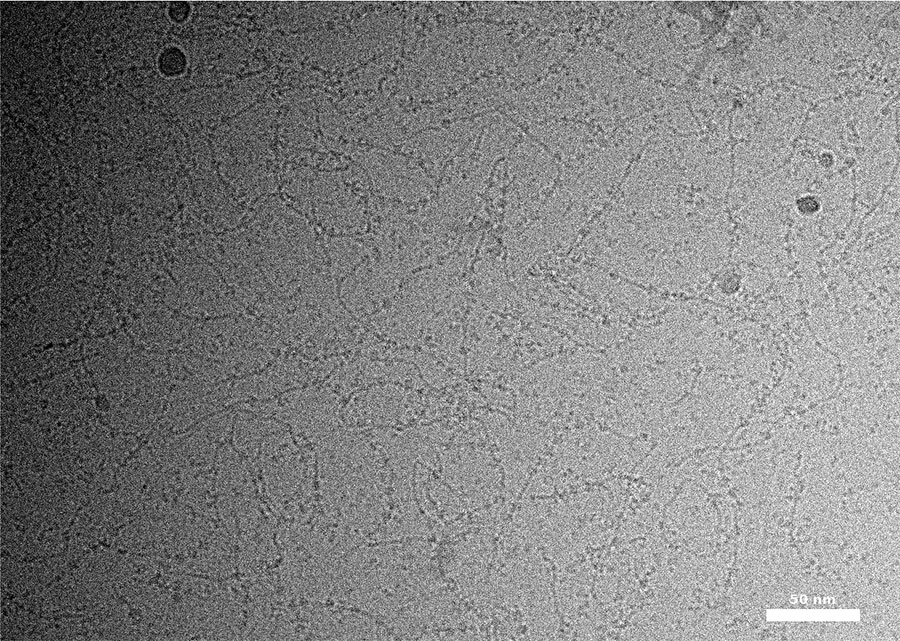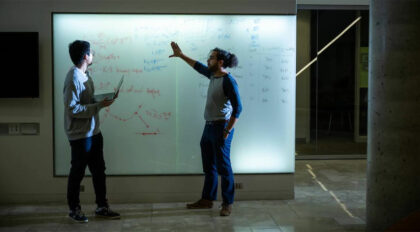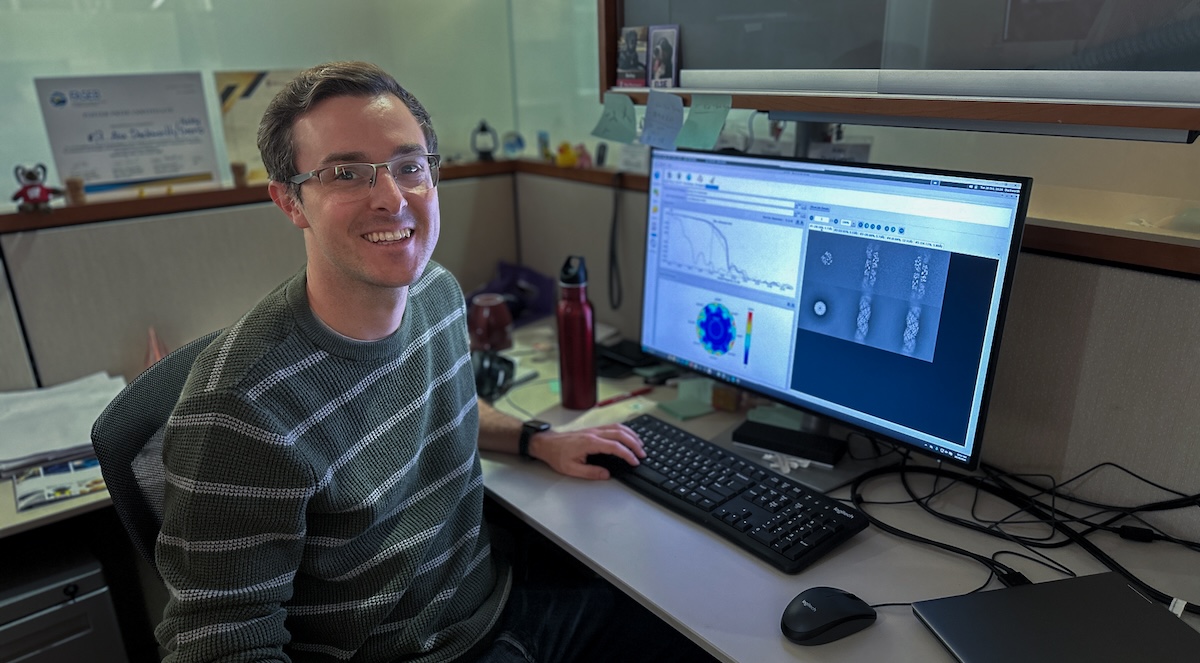Viewing the immense and the miniscule

Alex Duckworth’s boundless curiosity and appetite for learning takes him on remarkable journeys from the vastness of the universe to meticulous examinations of the building blocks of life at an atomic level.
A postdoctoral researcher in Morgridge Investigator Tim Grant’s lab in the John W. and Jeanne M. Rowe Center for Research in Virology, Duckworth’s work involves using cryogenic electron microscopy (cryo-EM) to study the structural mechanism of DNA replication and repair in human cells.
Using this technology, many hundreds of thousands to millions of images of molecules are taken on an electron microscope.
By combining information from these images using image processing techniques, it is possible to visualize the detailed atomic structure of the molecules. This allows researchers to gain a deeper understanding of how they work and can be used to design new drugs to target these molecules and ultimately provide therapeutic treatment for disease.
“I get to take amazing photos with cryo. We’re literally imaging groups of atoms,” says Duckworth. “I get genuinely excited when I have a nice, nine-hour day at the microscope.”
An astronomy hobbyist, Duckworth also spends free time with his telescope stargazing and photographing celestial worlds.

“Cryo-EM uses electrons and telescopes use visible light, but all of the physics principles are the same — like focusing the light,” he says. “When I’m at work, I take pictures of very, very small things and on the weekends, I’ll go out and take pictures of very, very big things.”
Duckworth, the son of a chemical engineer and a nurse, earned his undergraduate degree in biochemistry in 2017 at Indiana University, not far from where he grew up in Zionsville.
He came to Madison to begin his doctoral studies under UW–Madison biochemistry Professor Jim Keck, learning more about cryo-EM and studying how proteins recognize and repair DNA damage sites.
During that work, Duckworth met and worked with Grant as a collaborator and later joined his lab as a postdoc.
“I like cross-disciplinary science, and cryo-EM takes a lot of physics and puts it together with biology,” Duckworth says. “I like going to group meetings and learning about random stuff I’ve never heard of. I like learning new things, especially as they relate to what I’m doing. My skill is learning new things, rather than knowing everything about one topic.”
“I like the pursuit of answers; the thrill of the hunt in finding the unknown.” Alex Duckworth
In Grant’s lab, Duckworth focuses on developing methods to make the best use of cryo-EM for a variety of collaborators researching an array of biological challenges. Researchers worldwide are working to refine methods of using cryo-EM better or more effectively, and Duckworth says the Grant Lab aims to push the boundary and innovate.
“Researchers come to us and want to answer a specific question with cryo-EM and ask, ‘Can you guys do it?’ and we usually say, ‘Sure, we’ll go for it,’” he says. “I like the pursuit of answers; the thrill of the hunt in finding the unknown.”
For example, one question the lab is studying involves Bloom Syndrome, a rare inherited disorder that carries a predisposition to various types of cancer. “Knowing everything about Bloom, how it works, its three-dimensional structure in the cell, and how it binds to DNA is very important to that,” Duckworth says.
At Morgridge, Duckworth says an ethic of collaboration helps drive discovery forward.
“There’s a lot of camaraderie building here and they do a lot of career development events, and I like that culture,” says Duckworth. “There’s a giant academic presence here in Madison and a big biotech presence. It’s nice to have it all here. And I’m a big hockey player, so the winter didn’t scare me off.”

Rising Sparks: Early Career Stars
Rising Sparks is a monthly profile series exploring the personal inspirations and professional goals of early-career scientists at the Morgridge Institute.
